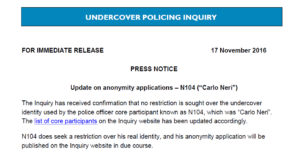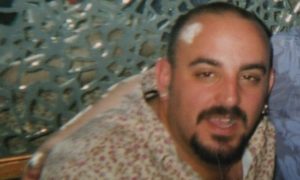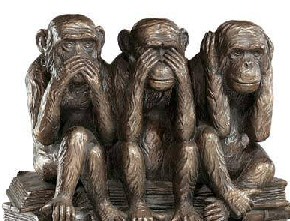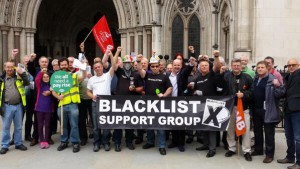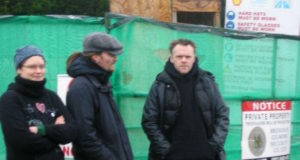Spycops & Stephen Lawrence
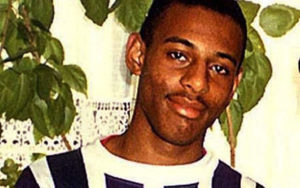
Stephen Lawrence
There is no issue more toxic to the Metropolitan Police than the racist murder of Stephen Lawrence.
After the teenager’s killing in 1993, the Met’s investigation was exposed as profoundly flawed, not because of individual errors but because of the dismissive attitude stemming from the police’s own ingrained racism.
There were also clear indicators of corruption. Clifford Norris, father of one of the killers David Norris, was a well-known drug and crime baron. It’s widely understood that he intimidated witnesses and had one of the officers investigating the murder, Detective Sergeant John Davidson, on his payroll. The five killers, named by dozens to police, remained at large.
The stoic campaign led by Doreen and Neville Lawrence kept the case going. In 1998 the new Labour government granted a full public inquiry, chaired by William MacPherson. It was a watershed moment for the Met who were forced to agree they were ‘institutionally racist’.
Just when it seemed the chain of cover-ups – and cover-ups of cover-ups – couldn’t get any longer, June 2013 brought a shocking new revelation. The Met had spied on the Lawrence family campaign. The ‘family liaison officer’ in their home had taken the details of all visitors and passed them to Special Branch whilst elite undercover officers were tasked to ‘find dirt’ with which to discredit the family.
Whistleblower officer Peter Francis, of secret deep-cover political policing unit the Special Demonstration Squad (SDS), described combing through hours of footage of demonstrations looking for Duwayne Brooks – Lawrence’s friend and the chief witness to the murder – involved in anything that he could be arrested for. Brooks was charged with disorder offences but the case was thrown out by the judge who branded it ‘an abuse of process.’
The vendetta against Brooks persisted, with another bogus case being thrown out in 2000. His lawyer Jane Deighton said at the time;
‘This is the second time a prosecution against him has been stayed by a judge as an abuse of process. I know of no other individual to whom that has happened in my 20-year career as a defence lawyer.’
Francis also told how, at the time of the 1998 inquiry, he had asked for the SDS’ actions to be disclosed but had been overruled by management. Absolutely aghast, Doreen Lawrence told the Guardian:
‘of all the things I’ve found out over the years, this certainly has topped it.’
The revelations forced the government – which had been largely ignoring the spycops scandal – to order a credible inquiry. The natural choice was Mark Ellison QC, the prosecutor who had finally secured convictions for two of Lawrence’s killers– including David Norris – in January 2012.
THE ELLISON REPORT
When it came out in March 2014, the 303 pages of the Stephen Lawrence Independent Review dealt a further excoriating blow for the Met, laying bare a swathe of clear indications of corruption in the initial investigation.
Ellison could have gone further if he’d had opportunity to examine all the files, but he discovered that ‘a lorry load’ of documents from anti-corruption investigation Operation Othona had been inexplicably shredded in 2003. The quantity was so vast that it cannot have been done in error. Former officers told the BBC it was:
‘disturbing, bizarre and suspicious.’
Without any disclosure, this fact alone demonstrates the Met institutionally persisting in prioritising their own position over the needs of justice and accountability. It later emerged that Bernard Hogan-Howe, the Met’s Commissioner, had been briefed about spying on the Lawrences a year before Peter Francis came forward, but chose not to tell the Lawrence family, let alone the public.
Ellison spoke to Francis’ manager at the SDS, Bob Lambert. With the spycops revelations piling up, Lambert was the most senior SDS figure in the spotlight and keen to avoid taking all the blame. He told Ellison about a meeting he brokered at the time of the MacPherson Inquiry between Richard Walton, one of the senior team working on the Met’s response to the MacPherson Inquiry, and one of Lambert’s SDS officers who had been spying on the Lawrences, known only as N81.
This was five years after the murder. It was not the act of a flummoxed investigator or a panicked team. This was the considered, deliberate defence organised by Walton and his team of senior officers around the Commissioner. Faced with exposure, Walton gave Ellison conflicting accounts and was politely described as ‘unconvincing.’
Ellison is clear that:
‘N81 was, at the time, an MPS [Metropolitan Police Service] spy in the Lawrence family camp during the course of judicial proceedings in which the family was the primary party in opposition to the MPS.’
He was unequivocal in his condemnation of this ‘completely improper use of the knowledge the MPS had gained by the deployment of this officer,’ adding;
‘Nobody seems to have considered how [it] would be viewed by the inquiry or the public, if it became known… There was no conceivable “public order” justification for this meeting. Nor was there any other discernible public benefit, and certainly none that could possibly outweigh the justifiable public outrage that would follow if the fact of the meeting had been made public when the Inquiry resumed in September 1998. In our opinion, serious public disorder of the very kind so feared by the MPS might well have followed’.
EFFECTS
Public Inquiry
Ellison was certain that there was much more in the murky world of spycops than his limited access to the even more limited extant files could uncover. Despite this, it was obvious that the SDS’ actions – indeed its very purpose – was corrupt.
With such an indisputable and damning result the Home Secretary immediately ordered a public inquiry into political undercover policing. Chaired by Lord Justice Pitchford, it relies upon the police themselves as archivists. The Met get to decide which self-incriminating documents they pass to the inquiry. Nonetheless, hundreds of thousands of pages have already been handed over. Woefully understaffed, it is delayed before it has even begun.
IPCC Report and resignations
The Independent Police Complaints Commission (IPCC) investigated the meeting between Bob Lambert, Richard Walton and officer N81. In the intervening years, Walton had climbed the ranks to become head of the Met’s Counter Terrorism Command, a unit formed from the merger of Special Branch and the Anti-Terrorist Unit. Having subsumed all previous units, Counter Terrorism Command deploy today’s spycops.
The IPCC report found that Walton and Lambert would have cases to answer for misconduct but Walton controversially dodged any hearing by being allowed to resign as the report was being completed. Lambert had left the police years before, collecting an MBE for services to policing as he did so, but he resigned both his academic posts at the same time that Walton quit the Met.
Miscarriages of Justice report
The Home Secretary also tasked Ellison to produce a second review on possible miscarriages of justice. Though not as impactful as the Lawrence Review, it was nonetheless startling. SDS officers had been through court cases under their false activist identities. They had been in lawyer-client meetings, submitted witness statements and withheld information knowing it would exonerate people who went on to be convicted. They had acted as secret judge and jury.
Ellison identified 83 cases where there was enough documentary evidence to warrant a review. This is likely to be a tiny fraction of the true total, due to the lack of record keeping and enthusiastic shredding by the spycops units.
There is an additional problem in passing questionable cases to the Crown Prosecution Service. The CPS actively colluded with the police to withhold evidence and secure 20 wrongful convictions in the Ratcliffe Power Station trial in 2010. This was unlikely to have been an isolated incident.
LIFTING THE LID
The police have characterised spycops as a problem of ‘rogue officers’, but it is just one facet of a police culture whose top priority is to protect its position. The Met’s press office has three times the staff of the Pitchford inquiry.
Beyond that, the IPCC is largely staffed by ex-police. Bodies like the CPS act as satellites to the police. This creates power with impunity, which encourages abuse and corruption.
The Lawrence case is iconic not for its rarity but because it forced us all to acknowledge oppressive policing culture. The unearthing of the SDS has forced the Met to admit spying on at least seventeen other similarly grieving families. The police are still refusing to give those families the details, showing an arrogance unchanged since Doreen Lawrence said:
‘their attitude can only be described as white masters during slavery’.
Ellison himself repeatedly emphasised that he was prevented from getting to the truth by police incompetence and corruption. But the threads he grasped are important for what they show of the greater hidden fabric they were torn from.
We cannot expect the full truth, let alone justice, from subsequent proceedings like the Pitchford inquiry. Nonetheless, it must be engaged with and encouraged because such things illustrate state power, they lift the mask and let the public see the rotten countenance beneath so that it can no longer fool us into thinking the mask is the true face.
Originally published by Real Media, 21 December 2016

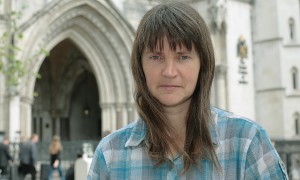 The Pitchford Inquiry into undercover policing has just
The Pitchford Inquiry into undercover policing has just 
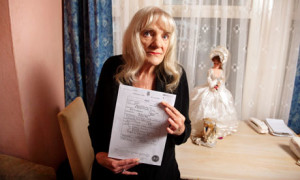
 Of the thousands of people targeted by Britain’s political secret police, around 180 were known to be so significantly impacted that they have been granted ‘core participant’ status at the forthcoming
Of the thousands of people targeted by Britain’s political secret police, around 180 were known to be so significantly impacted that they have been granted ‘core participant’ status at the forthcoming 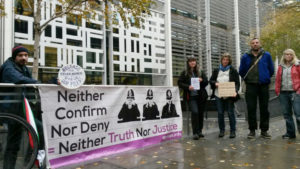 ear ago today
ear ago today 
